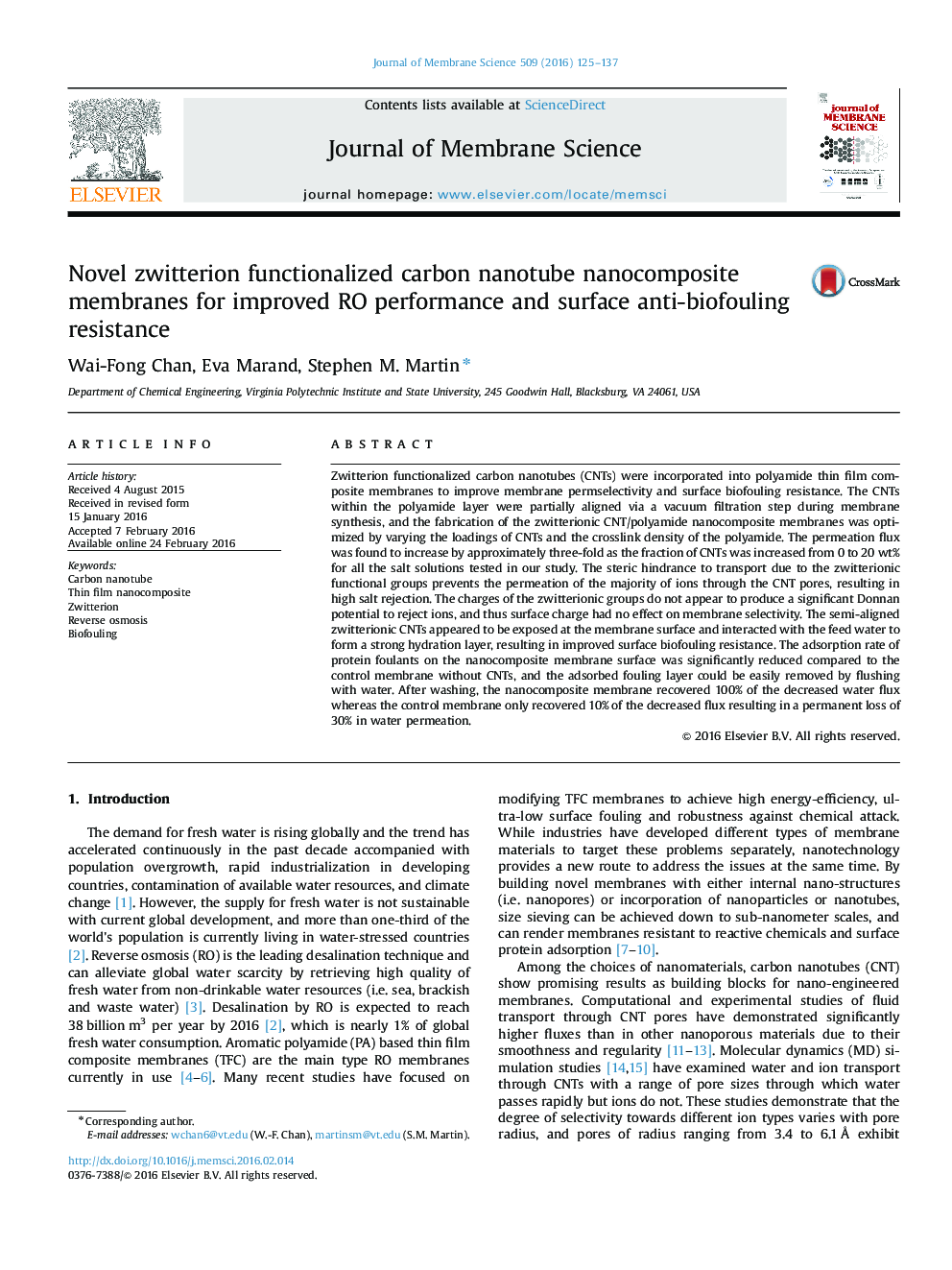| Article ID | Journal | Published Year | Pages | File Type |
|---|---|---|---|---|
| 632439 | Journal of Membrane Science | 2016 | 13 Pages |
•Zwitterionic CNTs were embedded in polyamide matrix to produce novel RO membranes.•The membranes exhibit high water flux while maintaining high salt rejection.•Steric hindrance is the dominant rejection mechanism for the novel membranes.•The zwitterionic functionality imparts improved membranes' biofouling resistance.
Zwitterion functionalized carbon nanotubes (CNTs) were incorporated into polyamide thin film composite membranes to improve membrane permselectivity and surface biofouling resistance. The CNTs within the polyamide layer were partially aligned via a vacuum filtration step during membrane synthesis, and the fabrication of the zwitterionic CNT/polyamide nanocomposite membranes was optimized by varying the loadings of CNTs and the crosslink density of the polyamide. The permeation flux was found to increase by approximately three-fold as the fraction of CNTs was increased from 0 to 20 wt% for all the salt solutions tested in our study. The steric hindrance to transport due to the zwitterionic functional groups prevents the permeation of the majority of ions through the CNT pores, resulting in high salt rejection. The charges of the zwitterionic groups do not appear to produce a significant Donnan potential to reject ions, and thus surface charge had no effect on membrane selectivity. The semi-aligned zwitterionic CNTs appeared to be exposed at the membrane surface and interacted with the feed water to form a strong hydration layer, resulting in improved surface biofouling resistance. The adsorption rate of protein foulants on the nanocomposite membrane surface was significantly reduced compared to the control membrane without CNTs, and the adsorbed fouling layer could be easily removed by flushing with water. After washing, the nanocomposite membrane recovered 100% of the decreased water flux whereas the control membrane only recovered 10% of the decreased flux resulting in a permanent loss of 30% in water permeation.
